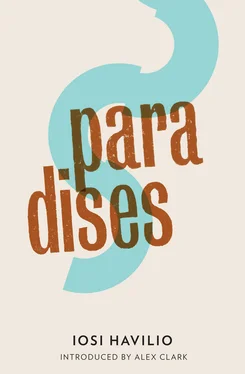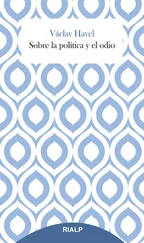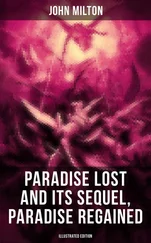In the evening, in the dark of the room, I trip over the huge tome with the reptile engravings. Simón, behind me, pauses in the threshold, alert to the fall that never happens. We settle down together in my bed, the ceiling fan on full, and start flicking through the engravings.
LOCUPLETISSIMI
RERUM
NATURALIUM
THESAURI
As I read I try to decipher a long list of Latin words on what must have been the original cover of the book, which dates from 1735. Simón is eager and I’m forced to turn the page. There’s Albertus Seba, author of the catalogue: curly wig, purple robe in a fabric with many folds which I suppose is silk, and a handkerchief knotted round his neck. He poses with a commanding air, gazing straight ahead, tense, not particularly convinced by the setting chosen for his portrait. As if he were doubtful of the painter’s skill. The man is in his study in front of a shelf filled with glass bottles: insects, corals, fossils. He is holding a jar containing a foetus in formaldehyde. With his free hand he is pointing to a notebook with illustrations of apes and trees, as well as a collection of molluscs displayed on a green cloth. In imitation of Seba, Simón stretches out his arm and points his finger at something in between the monkeys and the shells, several centuries later, but with the same intention.
The volume consists mainly of illustrations of reptiles, amphibians and plants. Snakes of all colours and sizes, fat, stripy, hunting and hunted. Also some frogs, lizards and an inexplicable swan that is completely out of proportion. I turn the pages and realise that the animals have very human shapes. There are lizards with the features and posture of a man, snakes with women’s faces. Sometimes slightly android. Somewhere between scientific and grotesque. Simón observes them with interest but in general he hurries me to turn the page, he wants to see what comes next. A boa scoffing a rat will keep him absorbed for longer. I think about Iris and the story about her aunt Lena and the python. The most striking thing about the picture isn’t the hunt so much as the fluidity of the action.
As I progress through the pages, I can’t help noticing the pattern of fungus fattening out the book. Like a mountain chain in profile. Simón falls asleep; tiredness still hasn’t touched me. I go back over some of the figures and discover others that passed me by in the first flick-through. This one, for example, of a ferret sitting on its hind legs biting a pear, or the dissection of a toad with its veins on show and its parts numbered.
I return to the start and find the embossed stamp of the Ladislao Holmberg Library: Buenos Aires, 1899. I wonder who he was. I run the tip of my thumb over the protuberances of the paper, it’s a nice sensation, almost tickly.
Canetti comes with me the first night. He picks me up at the hotel after ten, when I have no energy left for anything. I feel absolutely shattered: Simón, hours on my feet, sleeping badly, this new life I didn’t expect and which began so suddenly, without warning. I don’t know why I don’t change my mind while I still can, in fact I mentally rehearse excuses not to go: my son has a fever, I’d prefer not to leave him alone; I’m feeling unwell, vomiting, the best thing to do would be to look for someone else, there must be loads of nurses in the neighbourhood. But when Canetti turns up smiling, freshly showered, in a check shirt that must be about as old as me, convinced he’s doing us a good turn, I swallow my words and allow things to happen. Simón has just fallen asleep, Iris will be in the kitchen, or in her room but with the door open so as to hear him. If it’s something to do with work, she’ll always be willing to help out. I don’t think he’ll wake up, I say, just to say something. It’s not like he’ll die if he does, she says, with her own particular brand of humour, and sends me packing, swatting the air with the back of her hand. Like someone trying to scare a fly. Let’s go, I say to Canetti, who is waiting for me in the hotel corridor, keeping a wary eye out for the Spaniard. Walking along the pavement, I realise I’m wearing boots. It’s ridiculous, it’s not raining nor is it going to rain, it’s as if I can’t get rid of some of my country habits. I can’t be bothered going back to swap them for more urban footwear.
First we skirt a very long block, which must actually be four or five together, against the shell of a ruined building, old warehouses that advertisements promise to convert into something stunning and futuristic. We cross to the other side of the railway tracks, take a leafy gated passageway between the barbed wire and a series of buildings with visible brickwork, another street, two more blocks, then we turn left and cross the avenue next to a very organised camp of cardboard collectors.
On the way, Canetti returns to his story, about his sham illness, how he tried to pass as insane and leave work. Increasingly, as he adds details, contradictory at times, it strikes me that he must be exaggerating his tale. The limp is real, his past as a bank worker is also plausible, but the whole business of drunkenly beating the bathroom tiles so he could go to the psychiatrists’ interviews with fresh wounds, that’s what he says, fresh wounds, that really stretches the limits of credibility. He keeps his mouth closed for a few minutes, as if recalling it all. I glance at him, his face hardened with scars, the tortured eyes, and my doubts vanish, I believe it all. There was a point, he says suddenly, eyes on the ground, waiting for the traffic lights to change so we can cross, when I felt like a hero.
After he has whistled for an entire block, we come to the foot of a high-rise that anyone would think was abandoned, unfinished or under construction, if it weren’t for the clothes hanging over balconies, the lights flickering on and off, and a rickety armchair on the pavement. Without further ado, Canetti announces: We’re here. The front door is made of corrugated iron. Black and reinforced, with three numbers painted in aerosol: 975. That’s when I realise that this building is a squat. Relax, we’re safe here. Two sharp knocks on the sheet metal and a voice asks from the other side: Who is it? Canetti says his name and adds: From fourteen. The door opens and a flat face in a hood peers out, like a caricature of a guard dog that’s scary all the same. Follow me, says Canetti quietly, and we walk along a dark, narrow corridor with puddles I step in without seeing. We stop at the foot of a staircase lit by a neon tube hanging directly from the cables. Further along is the shaft for a non-existent lift.
Canetti knocks at another door, three gentle knocks this time, like a child asking permission to enter his parents’ room. The response takes a while. It’s me, he says. We’re welcomed by a head that seems the size of two and a grave hello, distorted as though a recording is doing the speaking. We enter an atmosphere that’s fuzzy round the edges and, despite the weak light, I can see him a bit better now. He’s an enormous boy, handicapped, of uncertain age, somewhere between adolescence and forty, deformed. In the centre of the room, sprawled in a red armchair, is a very wide woman surrounded by cushions; more than just fat, she’s inflated, pure volume. I can also make out an iron bedstead, a lamp with rings on it, a small shrine and a desk on castors, covered with untidy papers which, on seeing me, the woman pushes to one side with her foot. Canetti introduces me to Tosca and the rather deformed boy, Benito, who stays standing the whole time, watching a television that’s as bulky as he is. I’ll wait outside, says Canetti, and Tosca repeats the last word but in the tone of an order. Outside, she spits, and as soon as Canetti leaves she says to me: He’s a worm.
Читать дальше











